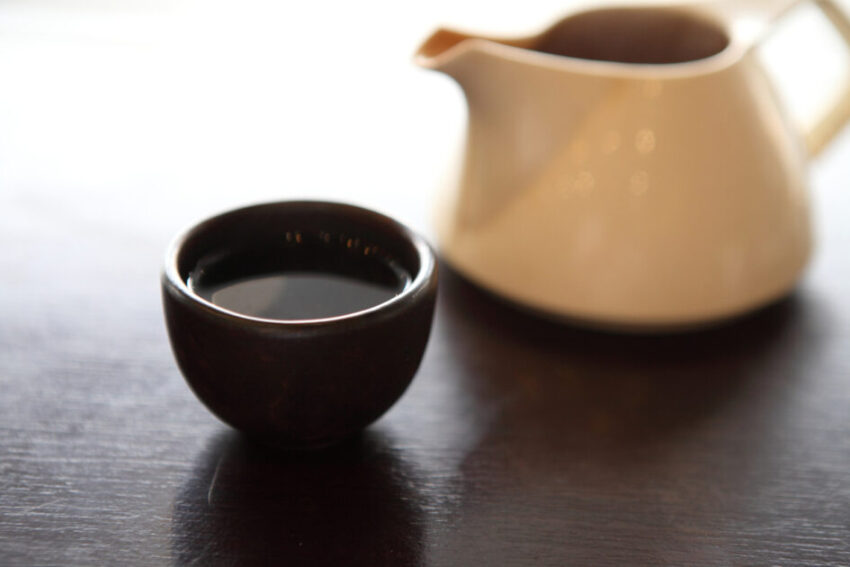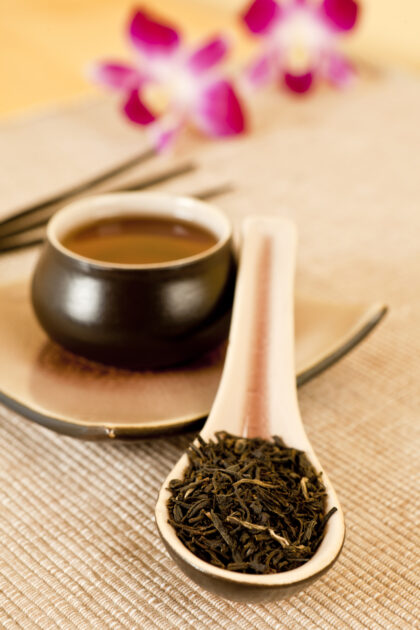Intro
Pau d’arco is a supplement derived from the inner bark of a tropical tree. It has been used for centuries in traditional medicine in South and Central America. Research suggests that drinking this tea could have a number of benefits when it comes to its antibacterial and antifungal effects.
To make pau d’arco tea, simmer 2 to 3 teaspoons of the pau d’arco bark in hot water for 15 minutes. This can be consumed up to 3 cups per day. Pau d’arco is also available in powder and capsule form. It is believed that the best way to consume pau d’arco may be capsule form because the chemical compounds are poorly extracted in water.
In this article, we’ll discuss the history of pau d’arco tea, steps to make this drink and the side effects, health benefits and recommended dosages of pau d’arco. Keep reading for more information on this bark tea.

What is Pau D’Arco Tea?
The name “pau d’arco” is the Portuguese word for “bow stick.” Although this may be a silly name for a tea, the tree bark was originally used by indigenous people in South America for making hunting bows.
Reports of using pau d’arco tea to heal health conditions dates back all the way to 1873. Research shows it to have benefits in a wide range of conditions, but where does it come from?
Pau d’arco is an evergreen canopy tree that grows in the Amazon rainforest The tree has extremely hard wood and sprouts rose colored flowers. There are hundreds of species of pau d’arco, but the most commonly used are tabebuia impetiginosa, tabebuia avellanedae, and red lapacho tabebuia. The inner lining of the bark of pau d’arco contains the active chemicals called naphthoquinones.
Those active ingredients are proven to have anti-inflammatory effects. Although much of the research surrounding pau d’arco is limited to test tube and animal studies – which cannot be directly applied to the human body, per the drug administration.

Steps to Make Pau D’Arco Tea
Pau d’arco can be made like many other herbal teas. It’s a process of dissolving various herbs, spices, flowers, etc. into water to make a liquid that contains the properties of the solid form of the tea. This can be done with loose materials or packaged into tea bags.
Here are a few helpful steps on how to make pau d’arco tea:
- In a medium pot, combine water, pau d’arco bark and any other spices to taste (we recommend ginger, lemon, or mint)
- Bring to a boil
- Reduce heat and simmer the ingredients for roughly 25 minutes
- Pour the liquid through a strainer to get rid of any loose ingredients
- Add any additional sweeteners such as sugar or honey
- Can be enjoyed warm or fully cooled up to 3 times per day
This process may seem like it takes a long time, but making a large batch will allow you to have leftovers that last up to a week. Additionally, if you have pau d’arco tea bags, the process will be much quicker. Simply heat water with a kettle, microwave or pot, pour into a mug and steep the tea bag to your desired strength of tea.
If you want an even faster way to get the benefits of pau d’arco, you can opt for methods such as liquid, powder or capsule form. Here’s a breakdown of these formats:
- Liquid: bark is dissolved in alcohol in order to pull out the intrinsic chemical factors. 1 to 2 ml. of the liquid extract can be taken 3 times a day.
- Powder: ground from the inner bark of Tabebuia impetiginosa. Typically dissolved into water or even smoothies.
- Capsule: bark is made into a capsule format that can easily be taken as any other dietary supplement. Experts recommend 2 capsules daily with water. This is one of the easiest ways to get pau d’arco into your diet.

Benefits of Drinking Pau D’Arco Tea
As mentioned before, there are many reports of medicinal use of pau d’arco tea, especially in western medicine. Scientific studies link this bark extract to have benefits in helping with many health conditions such as inflammation, weight loss, and various fungal infections. Before you decide to take pau d’arco, it is a good idea to consult with a healthcare provider who can give you advice on what is best for your specific needs.
Below are some of the good reasons pau d’arco is used:
- Reduce Inflammation
Chronic inflammation can affect our body in many different ways such as obesity, heart disease and even cancer. Several lab tests have proven that this tea acts as an herbal medicine in reducing inflammation, which is our body’s immune response to injury.
- Weight Loss
Studies on mice show that pau d’arco consumption can block the enzyme that helps your body digest and absorb dietary fat. This enzyme is called pancreatic lipase. By blocking pancreatic lipase, the body will not digest or absorb the fat, resulting in less calories absorbed and less weight gained by the body. It is important to note that this study was conducted on mice and may not have the exact same results on humans.
- Fights Candida
Candida albicans is a naturally occurring fungus that is found within our mouths and digestive tracts. If you have an overgrowth of candida albicans, it can lead to a fungal infection with the common names of “candida” or “yeast infection.” Pau d’arco can help the body fight candida because of its antifungal and antimicrobial activity.
- Fights metastasis
One of the most well-known effects of pau d’arco is its ability to fight metastasis, which is the spreading of cancer through the body, in addition to the pain associated with this condition. Beta-lapachone, one of the active chemical compounds in these medicinal herbs, has been proven to kill cancer cells in studies done on animals.

Side Effects of Drinking Pau D’Arco Tea
Although pau d’arco has many benefits, it’s also important to be aware of the side effects, just to be on the safe side. Research on the long-term safety of pau d’arco is largely unknown, especially when taking higher doses than recommended. Studies done on animals produced the following side effects:
- Sore throat
- Nausea
- Vomiting
- Urine discoloration
- Anemia
- Reproductive damage
- Internal bleeding
- Respiratory illness
- Chronic fatigue syndrome
- Blood clotting

HISTORY
Pau d’arco was discovered by the native peoples of Central and South America. Trees that grow in the rainforest were originally used to make hunting bows. The name “pau d’arco” is an appropriate term as it comes from the Portuguese word for “bow stick.”
The inner lining of the bark contains antibacterial, antifungal and anti-inflammatory properties that are shown to aid in the fight against various fungal infections, bacterial infections, and viral infections. Some of the most common health problems pau d’arco is used for are the common yeast infection, weight loss and even killing cancer cells.

WRAP UP
Pau d’arco can be made into a liquid, powder, or capsule format. The loose bark or powder form can be used to make a tea by dissolving the materials in hot water. When using the bark, it is important to check that your source is using the inner lining, not the whole bark, in order to receive the most beneficial chemical compounds.
We hope this article was helpful in learning how to make pau d’arco tea and everything else you need to know about this special healing drink!
Sources :
https://www.healthline.com/nutrition/pau-d-arco#inflammation
https://www.foodflo.com/post/2016/12/16/pau-d-arco-digestive-tea
https://mountainroseherbs.com/pau-darco-powder
Check out our post: THE BEST TEA REMEDY: QUICK RELIEF FOR A TOOTHACHE!